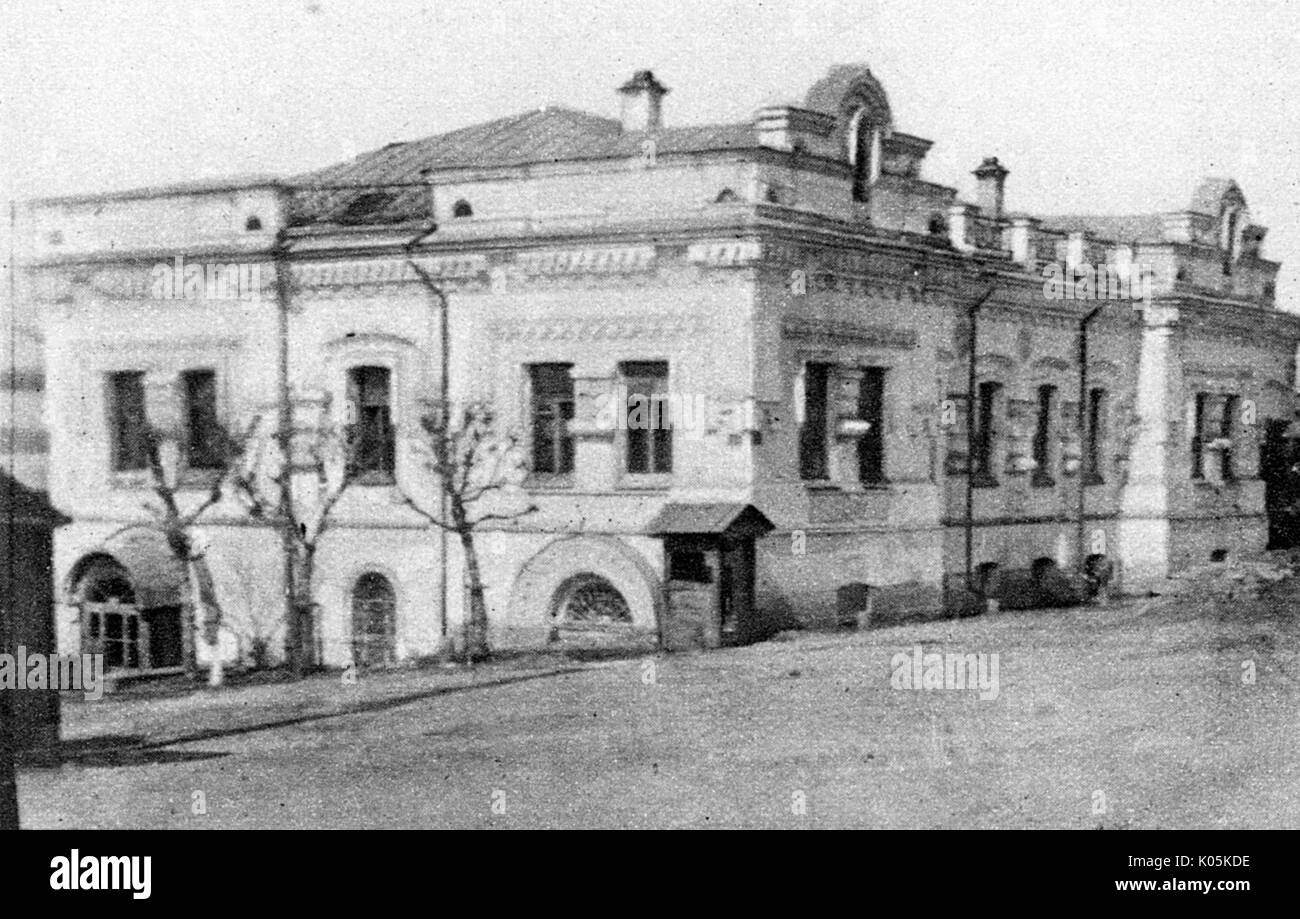Table Of Content

I’d rather they were concerned about paying people who are still alive,” said Pavel, a taxi driver who had been unaware of the ceremonies until police began closing city streets for the cortege. But some local residents dismissed the procession and funeral as overly political or irrelevant rituals adding to the debts of a government that already is deeply in arrears on state wages and pensions. Moscow Mayor Yuri M. Luzhkov and Yekaterinburg regional Gov. Eduard Rossel both waged ardent but unsuccessful campaigns to have the Romanovs buried in their cities, and their decisions to boycott the St. Petersburg ceremonies smacked of resentment. Eleanora Mezeneva, a teacher, called the two-day ritual “the event of the century” and said she approved of the modesty typifying the czar’s last rites. While those who have flourished in the freer atmosphere of the post-Communist era tend to acknowledge a need to correct the wrongs of their forebears, many Russians are simply too overwhelmed with the demands of survival to care much about political murders that took place decades ago. The legitimate male line of this branch is extinct with the death of Prince Dimitri Romanov in 2016.
House of Romanov
Yakov Yurovsky, chief executioner of Tsar Nicholas II and his family, early 20th century. For most of his life, Nicholas Romanov kept a diary, writing scrupulously, almost drearily – carefully noting events such as playing cards and having dinner. He did so as heir to the Romanov throne, as Emperor Nicholas II – and didn’t stop after losing his crown in 1917 and becoming just “citizen Romanov”.
Did King George V Deny Asylum To The Romanov Family?
Feodor Nikitich Romanov was descended from the Rurik dynasty through the female line. His mother, Evdokiya Gorbataya-Shuyskaya, was a Rurikid princess from the Shuysky branch, daughter of Alexander Gorbatyi-Shuisky. A ninth generation ancestor of Michael I Romanov is Dimitri Konstantinovich. 2 March] 1917 as a result of the February Revolution ended 304 years of Romanov rule and led to the establishment of the Russian Republic under the Russian Provisional Government in the lead-up to the Russian Civil War of 1917–1922. Of the House of Romanov's 65 members, 47 survivors went into exile abroad.[4] In 1924, Grand Duke Kirill Vladimirovich, the senior surviving male-line descendant of Alexander II of Russia by primogeniture, claimed the headship of the defunct Imperial House of Russia.
people are shot amid fight at a Florida party venue; teen is arrested
To the watchman one boy – Tikhomirov Alexander Dmitrievich, born in 1956 was very attached. His father was a general and his mother worked as a general practitioner. His grandmother Olga took him to church when he was three years old and he already knew the prayers. Avdonin argues for a Yekaterinburg burial to allow the descendants of the Bolshevik executioners here to make amends for the most heinous local crime.
The Crown
Where Is Ipatiev House? - True Story of the House Where the Romanovs Were Killed in the Crown - Town & Country
Where Is Ipatiev House? - True Story of the House Where the Romanovs Were Killed in the Crown.
Posted: Fri, 25 Nov 2022 08:00:00 GMT [source]
As he has frustrated the final work of the federal commission, Rossel has been simultaneously recruiting support for a Yekaterinburg burial among factions of the more than 200 distant Romanov relatives scattered across Europe. Rossel’s deputy, Anatoly Gayda, stands firmly behind the governor’s refusal to allow the remains to leave Yekaterinburg before Yeltsin issues a formal order on interment. “We can hardly dig up the whole region in search of the other remains,” says Nevolin, who has evolved as gatekeeper of the coveted relics and guardian of the laboratory-crypt’s only key.
Because of Queen Victoria and her children’s marriages, many royal families are somehow connected to the Romanovs, earning her the nickname of “the grandmother of Europe,” according to Town & Country. But those family trees and their respective dramas need a whole Netflix series of their own. Nicholas, facing his family, turned and said "What? What?"[92] Yurovsky quickly repeated the order and the weapons were raised. The Empress and Grand Duchess Olga, according to a guard's reminiscence, had tried to bless themselves, but failed amid the shooting. Yurovsky reportedly raised his Colt gun at Nicholas's torso and fired; Nicholas fell dead, pierced with at least three bullets in his upper chest. The intoxicated Peter Ermakov, the military commissar for Verkh-Isetsk, shot and killed Alexandra with a bullet wound to the head.
Years Later, Czar and Family to Rest in Peace
Some of the notable people he has worked with during that time are Bruce Springsteen, Tom Petty, John Lennon, and Patti Smith. In addition, he has 4 children with his previous wife, Vicki Iovine. When I met the watchman Bukharkin Fyodor Ivanovich, a great admirer of the Imperial Family, in St. John’s Church in Ekaterinburg, I began to learn more about it.
The Romanov crosses
However, before they are saved, the family is executed by the Bolsheviks. One day Sasha brought a piece of plaster from that wall in his grandmother’s locket with a lid, filled with hot wax. Such a small piece in the shape of a trapezoid, and there, like a bouquet of flowers, was sprinkled – large, medium, smaller, maroon, orange, light orange droplets. Card-playing security guards and an iron gate seal off the cluttered laboratory holding the royal remains of Nicholas II and his family--precautions taken since one of the czar’s ribs was pilfered three years ago. Elizaveta Mavrikievna, widow of Konstantin Konstantinovich, escaped with her daughter Vera Konstantinovna and her son Georgii Konstantinovich, as well as her grandson Prince Vsevolod Ivanovich and her granddaughter Princess Catherine Ivanovna to Sweden.
More From the Los Angeles Times
Following the murder of the Romanov family, the Bolsheviks made several attempts to dispose of the bodies. Initially the bodies were to be thrown down a mineshaft; however, the location of the disposal site was revealed to locals, causing them to change the location. Instead of a burial, the Bolsheviks decided to burn two of the corpses of the former royal family.
Ioann Konstantinovich's wife, Elena Petrovna, was imprisoned in Alapayevsk and Perm, before escaping to Sweden and Nice, France. The Ipatiev House has the same name as the Ipatiev Monastery in Kostroma, where Mikhail Romanov had been offered the Russian Crown in 1613. The large memorial church "on the blood" has been built on the spot where the Ipatiev House once stood. Alexander II, son of Nicholas I, became the next Russian emperor in 1855, in the midst of the Crimean War. While Alexander considered it his charge to maintain peace in Europe and Russia, he believed only a strong Russian military could keep the peace. By developing the Imperial Russian Army, giving increased autonomy to Finland, and freeing the serfs in 1861 he gained much popular support for his reign.
Her other daughter, Tatiana Konstantinovna, also escaped with her children Natasha and Teymuraz, as well as her uncle's aide-de-camp Alexander Korochenzov. In 2005 the coffin with her remains was moved to the Peter and Paul Fortress to be buried beside that of her husband. The transfer of her remains was accompanied by an elaborate ceremony at Saint Isaac's Cathedral officiated by Patriarch Alexy II of Moscow. Descendants and relatives of the Dowager Empress attended, including her great-grandson Prince Michael Andreevich, Princess Catherine Ivanovna of Russia, the last living member of the Imperial Family born before the fall of the dynasty,[23] and Prince Dmitri and Prince Nicholas Romanov. Nicholas II and his family were proclaimed passion-bearers by the Russian Orthodox Church in 2000.
For some time there was even a kindergarten, and in the basement, where the Imperial family were murdered, a children’s shower was installed. Yurovsky had, meanwhile, been planning the family’s murder, though with a surprising lack of efficiency for such a ruthless, dedicated Bolshevik. He chose the site in the forest outside Ekaterinburg where the bodies were to be disposed of, but failed to check how viable it really was as a place of concealment.
The Crown posits that the two grew up together in Germany as princesses and that Mary only became engaged to King George’s older brother after Alexandra had turned him down. Knatchbull suggests that Mary always worried that Alexandra was prettier and would upstage her. In the middle of The Crown Season 5’s retelling of the drama surrounding the royal family amid Prince Charles and Princess Diana’s tumultuous split, the series transports viewers back to 1917 and explores the Windsors’ connection to the Romanov family of Russia. If you aren’t up to speed on your Russian history or European royal family trees, it can be a bit confusing as to how the British royal family is connected to the Romanov family, but they are, in fact, related on both Prince Philip’s and Queen Elizabeth’s sides. The Crown’s Season 5 episode “Ipatiev House” explores Queen Elizabeth II’s connection to the Russian royal family.
The cortege of teal hearses slowed as it carried the Romanovs past their imperial home at the Winter Palace, in a symbolic bow to the Russian tradition of returning loved ones after death to their last home. “This truth has been concealed for 80 years, but now we need to tell this truth, and I should take part,” Yeltsin told his countrymen, apparently more mindful of his historical legacy than any short-term political ripples. The centerpiece is the coat of arms of Moscow that contains the iconic Saint George the Dragon-slayer with a blue cape (cloak) attacking golden serpent on red field.
In 1919, Maria Feodorovna, widow of Alexander III, and mother of Nicholas II, managed to escape Russia aboard HMS Marlborough, which her nephew, King George V of the United Kingdom, had sent to rescue her, at the urging of his own mother, Queen Alexandra, who was Maria's elder sister. After a stay in England with Queen Alexandra, she returned to her native Denmark, first living at Amalienborg Palace, with her nephew, King Christian X, and later, at Villa Hvidøre. Upon her death in 1928 her coffin was placed in the crypt of Roskilde Cathedral, the burial site of members of the Danish royal family. Late on the night of 16 July, Nicholas, Alexandra, their five children and four servants were ordered to dress quickly and go down to the cellar of the house in which they were being held. There, the family and servants were arranged in two rows for a photograph they were told was being taken to quell rumors that they had escaped.

No comments:
Post a Comment